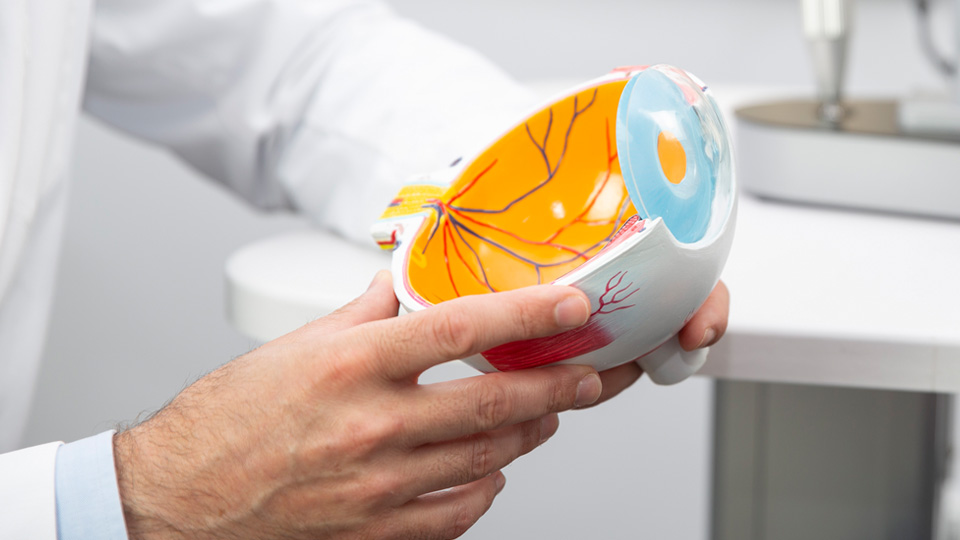01/06/2023
The eye is a complex and fascinating organ that enables us to see and perceive the world around us. The anatomy of the eye is very detailed, but we can divide it into several main parts:
- The cornea. This is the clear outer layer of the eye that protects the iris and the pupil. It also helps focus light on the retina. It has an approximate diameter of 11-12 mm. Its thickness varies between 0.5 and 0.6 mm in the centre and around 0.6 and 0.8 mm at the edges.
- The sclera. It is the white and fibrous layer that surrounds the eye, providing it with structural support and protection. The diameter of the sclera is typically around 24 mm, and its thickness can vary, being thinnest at the front and thickest at the back.
- The conjunctiva. This is a thin and transparent membrane that covers both the sclera and the inside of the eyelids.
- The pupil. It is the circular opening in the centre of the iris that controls the amount of light that enters the eye. Typically, the diameter of the pupil can range from 2 and 8 mm under normal conditions.
- The iris. It is the coloured part of the eye that surrounds the pupil. It regulates the amount of light that enters the eye and determines the colour of the eyes. On average, it has a diameter of approximately 12 mm.
- The crystalline lens. Positioned behind the iris, it is a convex lens that helps to focus light onto the retina. It measures around 9 mm in diameter and is approximately 4 mm thick.
- The retina. This is a layer composed of light-sensitive cells located at the back of the eye. Its primary function is to convert incoming light into electrical signals, which are then transmitted to the brain for interpretation. The retina is approximately 0.5 mm thick and has a diameter similar to that of the sclera, around 24 mm.
- The optic nerve. It is a bundle of nerve fibres that connects the retina to the brain. It carries electrical signals from the retina to the brain, where they are processed, allowing us to see and perceive the world through vision.
Besides the main parts mentioned earlier, the eye possesses muscles responsible for its movement and glands that produce tears, ensuring its lubrication and protection. Each of these parts plays a vital role in the visual process, starting from allowing light to enter the eye to the brain's interpretation of electrical signals.
Dr. Silvana Belotto, ophthalmologist at the Barraquer Ophthalmology Centre
